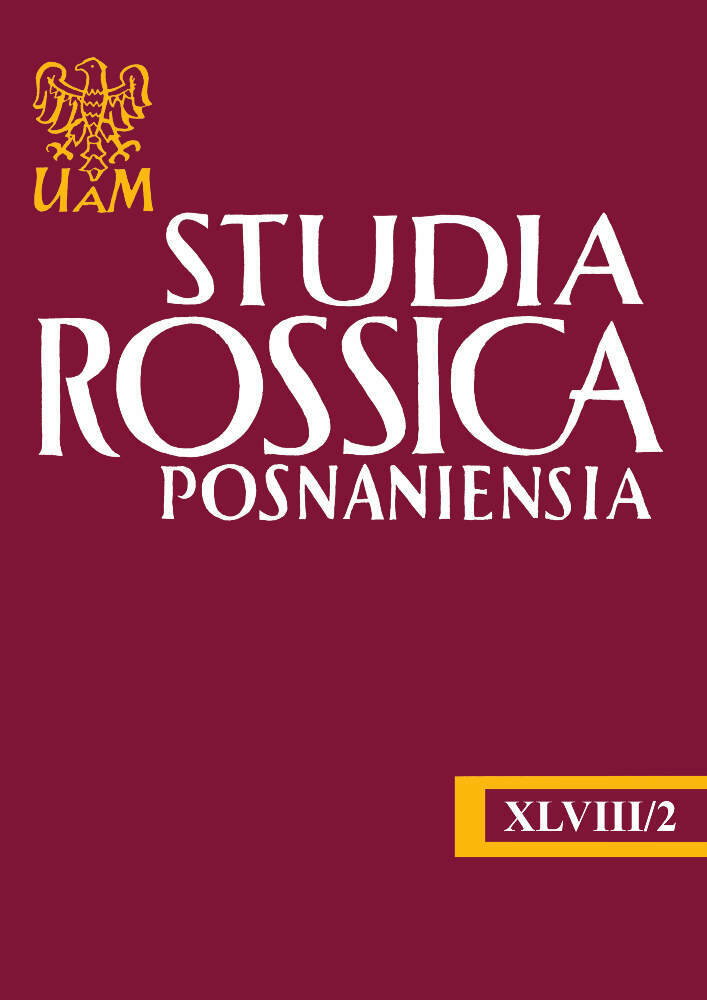Abstrakt
The article focuses on a specific and little explored branch of audiovisual translation, namely non-speech information (Zdenek, 2015) in the Closed Captions (CC) in the Netflix production series To the lake (Russian title Эпидемия), directed by Pavel Kostomarov. The article attempts to reach a consensus in the terminological dispute between the countries of North America and Oceania (Captions) on the one hand, and the countries of Europe on the other (Subtitles). The decision to use the term “captions” and “captioning” is being justified. The method used in the research is the corpus-driven method, and the contrastive method between the intralingual captions in Russian and the interlingual captions in English. Individual types of non-speech information are compared: Speaker identifier, Language identifier, Sound effects, Paralanguage, Manner of speaking identifiers, Music and Channel identifier (Zdenek, 2015). In addition, some space is devoted to the NSI as non-verbatim. The results show a slight discrepancy in the amount of NSI used (2,020 in the English version and 2,004 in the Russian version). The greatest disproportions are noticed only at the level of individual categories. Differences were noticed, among others, in the level of the originality of data records, i.e. greater synonymy in the English version, especially in the category of Paralanguage and Sound effects. The research opens up a discussion on the condition of captions and improving accessibility in the NSI usage.
Bibliografia
Bogucki, Łukasz. Areas and methods of audiovisual translation research. Frankfurt am Main, Peter Lang, 2016. DOI: https://doi.org/10.3726/978-3-653-05859-8
“Caption”. Online etymology dictionary. Web. 05.09.2021. www.etymonline.com/word/caption.
Clark, Joe. Comments on Josélia Neves’s Ph.D. Thesis on captioning. 2006a. Web. 05.09.2021. joeclark.org/access/captioning/Neves/.
Clark, Joe. Why don’t deaf people care about captioning quality?. 2006b. Web. 05.09.2021. joeclark.org/access/captioning/Neves/.
Gem & the deadheads – Why can’t you feel it?. Web. 11.09.2021. www.youtube.com/watch?v=l-977t8r6Swc.
Harkins, Judith E., Ellie Korres, Beth Singer, Barbara M. Virvan. “Non-speech information in captioned video: A consumer opinion study with guidelines for the captioning industry”. Technology assessment program. Gallaudet University. 1995. Web. 10.09.2021. https://dcmp.org/learn/static-assets/nadh126.pdf.
Longman dictionary of contemporary English [for advanced learners]. Harlow, Essex, Pearson, 2014.
Ožegov, Sergej, Lev Skvorcov. Slovar’ russkogo âzyka. Moskva, Oniks, 2008.
Tognini-Bonelli, Elena. Corpus linguistics at work. Amsterdam–Philadelphia, J. Benjamins, 2001. DOI: https://doi.org/10.1075/scl.6
Zdenek, Sean. Reading sounds: Closed-captioned media and popular culture. Chicago, The University of Chicago Press, 2015. DOI: https://doi.org/10.7208/chicago/9780226312811.001.0001
Licencja
Prawa autorskie (c) 2023 Daniel Piecewicz

Utwór dostępny jest na licencji Creative Commons Uznanie autorstwa – Użycie niekomercyjne – Na tych samych warunkach 4.0 Międzynarodowe.

